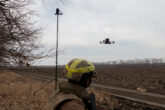December 05, 2017
Congress, cut the continuing resolutions so Defense can do its job
As we once again find ourselves hurtling towards the expiration of yet another continuing resolution at the end of this week, with no long-term budget deal in sight, it seems an opportune time to review the very real harms to the nation’s safety done by Congress’s inability to perform its most basic Article 1 function — appropriating funds to run the government — on time or with any semblance of predictability.
Democrats and Republicans agree that the 2011 Budget Control Act has been a failure, and that Congress should return to regular order in the budget process. We — a Democrat (and former Pentagon hand) and a Republican (and former Hill staffer) — represent this bipartisan consensus. While we do not necessarily agree on how big the defense budget should be, we both believe that national security requires stability and predictability in defense budgeting.
The Department of Defense has received an average of $23.6 billion less in the base budget per year since the 2011 Budget Control Act caps took effect in fiscal year 2013. In theory, the Budget Control Act should have at least provided stability in exchange for this significant reduction in funding. By creating annual caps on defense discretionary spending, the DOD would at least know how much money it could expect year to year.
Read the full commentary in The Hill.
More from CNAS
-
Defense / Transatlantic Security
When Defense Becomes Destruction: Austria-Hungary’s Mistake and Ukraine’s RiskThis article was originally posted on War on the Rocks. The southeastern Polish city of Przemyśl, with its elegant 19th century Habsburg-era train station, remains one of the ...
By Franz-Stefan Gady
-
Defense / Transatlantic Security
Ukraine’s Catch-22 MomentThis article was originally published in the Financial Times. In Joseph Heller’s wartime classic, Catch-22, the protagonist Yossarian seeks out the US army surgeon Doc Daneeka...
By Franz-Stefan Gady
-
CNAS Insights | Budgetary Own Goals Undermine “Speed and Volume”
On November 7, Secretary of Defense Pete Hegseth laid out a plan to overhaul the Department of Defense’s (DOD’s) acquisition system. Placing an emphasis on delivering new capa...
By Philip Sheers, Carlton Haelig & Stacie Pettyjohn
-
Drones: Who Is Making the New Weapons of War?
From Ukraine and Russia to Gaza and Sudan, drones have become a key weapon of war. Which companies are making them, and profiting from this rapidly expanding but controversial...
By Stacie Pettyjohn




